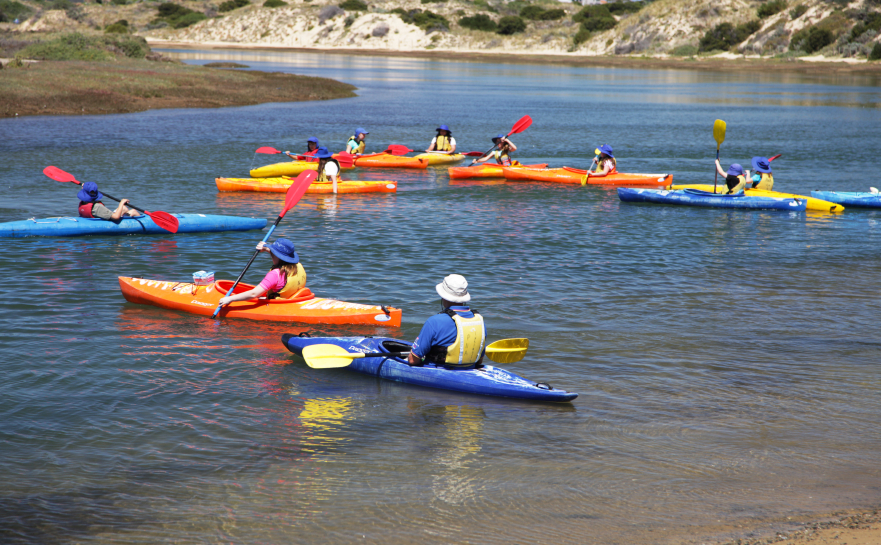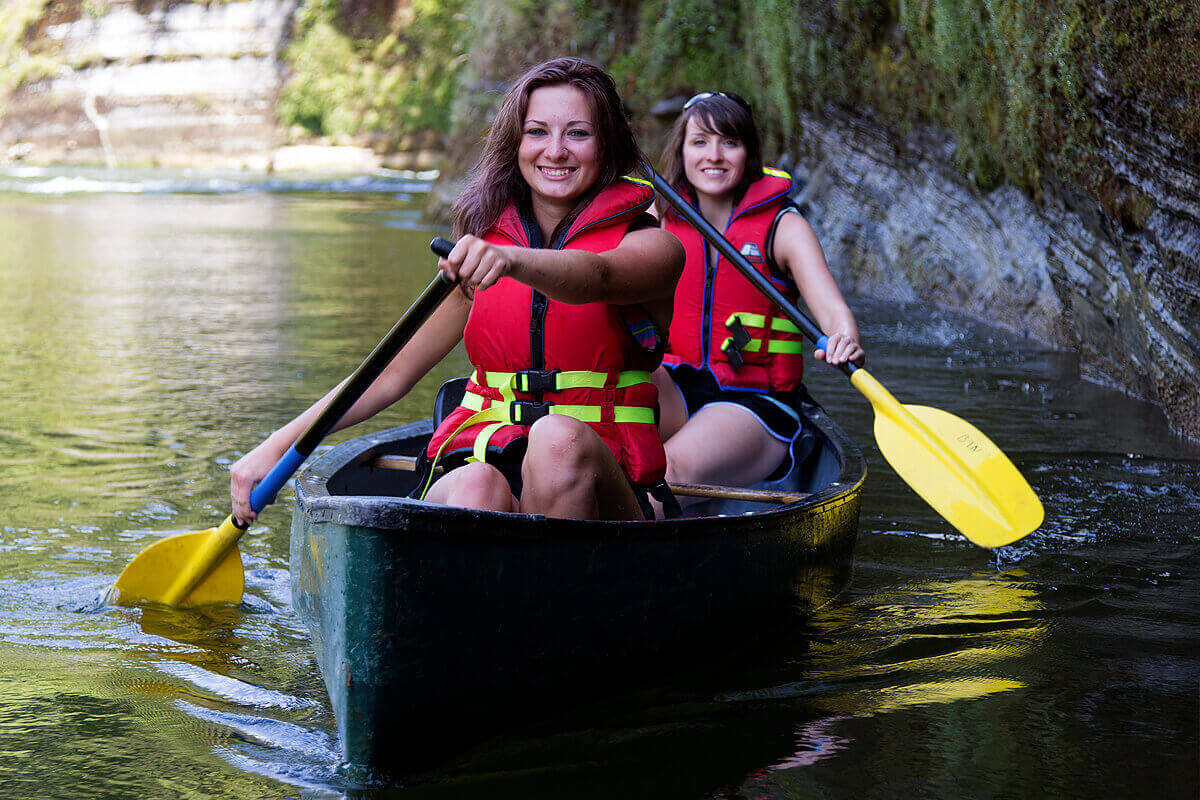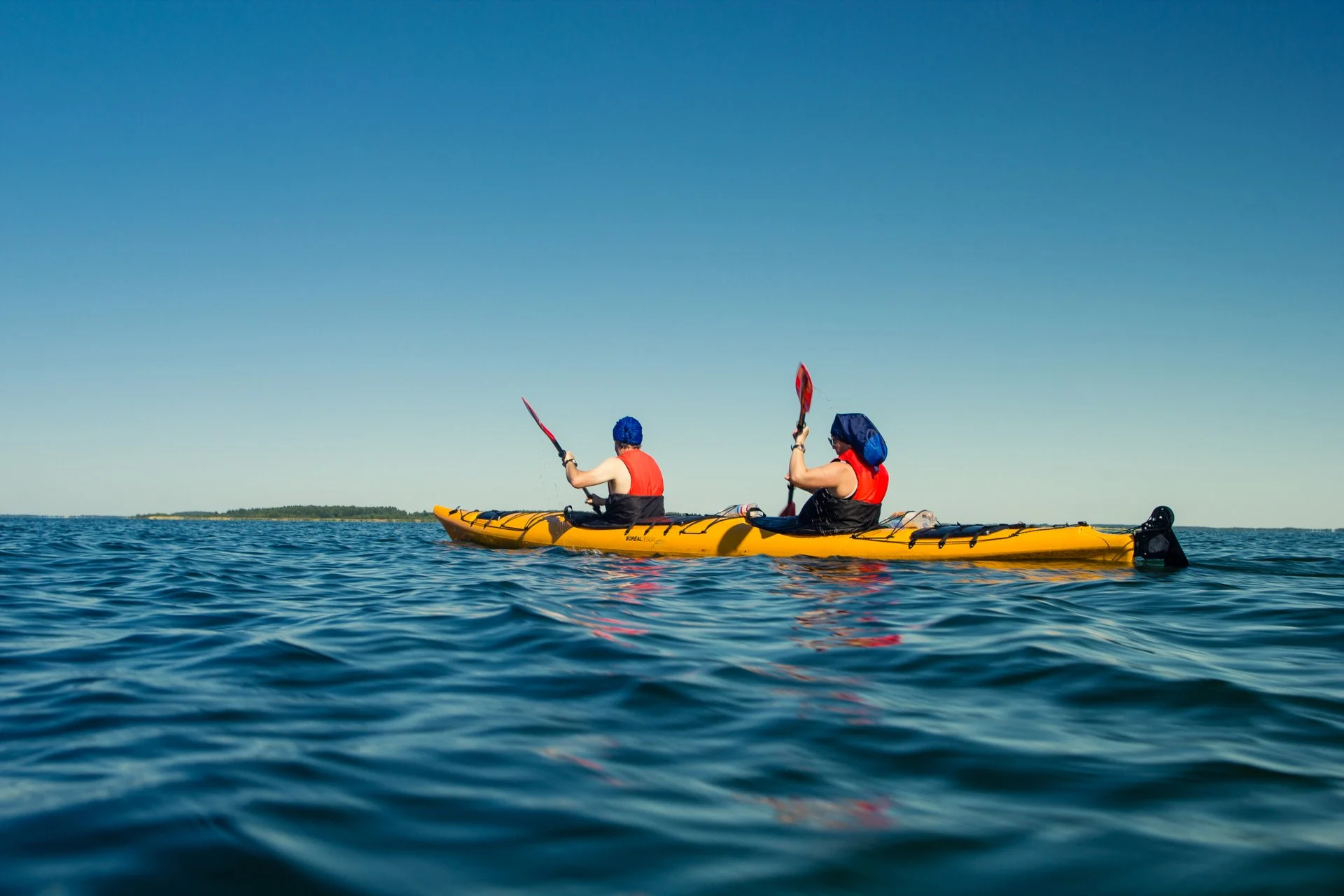I. Introduction to Kayaking and Canoeing

A. Overview of Kayaking and Canoeing as Recreational Activities
Kayaking and canoeing are popular recreational activities that involve paddling on waterways using specialized watercraft. They offer opportunities for outdoor exploration, physical fitness, and connection with nature.
B. Understanding the Key Differences between Kayaking and Canoeing
Kayaking involves the use of a small, narrow watercraft called a kayak, which is propelled using a double-bladed paddle. Canoeing, on the other hand, uses a canoe, a wider and open-top watercraft that is propelled with a single-bladed paddle. The design and paddling techniques differ between the two activities.
C. Benefits of Engaging in Kayaking and Canoeing
Engaging in kayaking and canoeing provides numerous benefits, including physical exercise, stress relief, and improved cardiovascular fitness. These activities also allow for exploration of waterways, wildlife observation, and the opportunity to experience the tranquility of nature.
II. Equipment and Gear for Kayaking and Canoeing
A. Choosing the Right Kayak or Canoe
- Exploring Different Kayak and Canoe Designs and Materials
Kayaks and canoes come in various designs and materials, such as plastic, fiberglass, or inflatable options. Each design and material has its own advantages and considerations, including durability, maneuverability, and weight.
- Identifying Factors to Consider when Selecting a Kayak or Canoe
Factors to consider when selecting a kayak or canoe include the intended use (e.g., recreational, touring, whitewater), the paddler’s skill level, the water environment (e.g., calm lakes, rivers, ocean), and personal preferences regarding stability and maneuverability.
B. Essential Paddling Gear and Safety Equipment

- Understanding Necessary Paddles, Life Jackets, and Safety Gear
Essential gear for kayaking and canoeing includes paddles, life jackets (personal floatation devices or PFDs), and safety equipment like a whistle, throw rope, and bilge pump. These items are crucial for safety on the water.
- Identifying Additional Gear for Comfort and Safety
Other gear that can enhance the paddling experience includes waterproof bags or dry bags for personal belongings, spray skirts for kayakers, and deck bags for canoeists. Sun protection gear, such as hats, sunglasses, and sunscreen, is also important.
III. Techniques and Skills for Kayaking and Canoeing
A. Paddling Strokes and Maneuvers
- Exploring Basic Paddling Strokes for Kayaking and Canoeing
Basic paddling strokes for kayaking include the forward stroke, reverse stroke, sweep stroke, and draw stroke. Canoeing strokes include the forward stroke, J-stroke, sweep stroke, and pry stroke. These strokes allow for efficient propulsion and maneuverability.
- Practicing Advanced Techniques for Efficient Paddling
Advanced paddling techniques, such as edging, bracing, and ferrying, enhance stability and control in more challenging water conditions. These techniques require practice and help paddlers navigate obstacles and currents effectively.
- Understanding Navigation Techniques for Waterway Exploration
Navigation techniques for kayaking and canoeing involve understanding map reading, using landmarks, and following navigation aids such as buoys or signs. Basic navigation skills help paddlers plan routes and stay on course.
- Highlighting Safety Skills and Rescue Techniques
Safety skills for kayaking and canoeing include self-rescue techniques, such as re-entering a capsized kayak or performing a T-rescue in a canoe. Paddlers should also be aware of safety guidelines, such as proper distance from other watercraft and right-of-way rules.
IV. Choosing the Right Waterways for Paddling
A. Exploring Different Types of Waterways for Kayaking and Canoeing
Different waterways offer unique paddling experiences. Rivers provide opportunities for whitewater adventures or leisurely floats, while lakes offer calm waters and scenic views. Coastal areas allow for sea kayaking and exploration of shoreline ecosystems.
- Identifying Suitable Rivers, Lakes, and Coastal Areas
Research local rivers, lakes, and coastal areas known for their suitability for kayaking and canoeing. Consider factors such as water conditions, accessibility, scenery, and any special regulations or permits required.
- Understanding Considerations for Different Waterway Environments
Each waterway environment has its own considerations, such as channel currents, tides, wind patterns, and potential hazards. Understanding these factors is crucial for planning safe and enjoyable paddling trips.
B. Researching Local Regulations and Permits
- Discovering Permit Requirements and Waterway Access Points
Research local regulations and permit requirements for paddling in specific waterways. Some areas may require permits or have restrictions on access points, launch fees, or time limitations. Familiarize yourself with these regulations to ensure compliance.
- Identifying Local Regulations for Paddling Activities
Research local regulations related to waterway navigation, safety equipment requirements, and any specific rules or restrictions in place. These regulations are in place to ensure the safety and enjoyment of all paddlers.
V. Types of Kayaking and Canoeing Adventures

A. Whitewater Kayaking and Canoeing
- Exploring Exciting Rapids and Challenging Whitewater Environments
Whitewater kayaking and canoeing involve navigating challenging river sections with rapids, waves, and obstacles. It requires advanced paddling skills, knowledge of river hydraulics, and the use of specialized equipment.
- Understanding Safety Considerations and Skill Requirements
Whitewater paddling requires appropriate safety gear, including helmets, spray skirts, and personal flotation devices (PFDs) with added protection. It is essential to develop advanced paddling skills and seek proper training before attempting whitewater adventures.
B. Sea Kayaking and Canoeing
- Discovering Coastal Exploration and Open Water Paddling
Sea kayaking and canoeing involve paddling on open water, such as bays, estuaries, or oceans. It offers opportunities for coastal exploration, wildlife observation, and enjoying the beauty of marine environments.
- Highlighting Equipment and Safety Considerations for Sea Paddling
Sea paddling requires specialized equipment, including sea kayaks or canoes specifically designed for open water conditions. It is important to consider factors such as tides, currents, wind, and potential weather changes. Safety gear, such as marine radios and navigational aids, is also crucial.
VI. Safety Considerations for Kayaking and Canoeing
A. Understanding Water Safety and Hazards
- Identifying Common Water Hazards and Potential Risks
Water hazards can include submerged obstacles, strong currents, changing water levels, and weather-related dangers. Understanding these hazards and assessing water conditions is essential for staying safe while paddling.
- Exploring Safety Guidelines for Paddling Activities
Follow safety guidelines, such as wearing proper safety equipment, practicing self-rescue techniques, and being aware of weather conditions. Paddlers should also be knowledgeable about the waterway they are paddling on and their own skill limitations.
B. First Aid and Emergency Preparedness

- Knowing Basic First Aid Techniques for Paddling Emergencies
It is important to have basic first aid knowledge, including treating common injuries, recognizing signs of hypothermia or heat exhaustion, and responding to potential water-related emergencies.
- Establishing Emergency Plans and Communication Protocols
Develop an emergency plan that includes communication protocols, knowledge of nearby emergency services, and a system for alerting others if assistance is needed. Inform a reliable person of your paddling plans and estimated return time.
Kayaking and canoeing provide exciting opportunities for adventure and exploration on the water. By understanding the equipment and gear needed, mastering techniques and skills, and choosing suitable waterways, paddlers can have a safe and enjoyable experience. Whether it’s whitewater kayaking, sea kayaking, or leisurely canoeing, each type of paddling adventure offers its own unique challenges and rewards. Prioritizing safety considerations and being prepared for emergencies further enhances the overall paddling experience. With proper knowledge and practice, kayaking and canoeing offer an exhilarating way to connect with nature and enjoy outdoor recreation.
